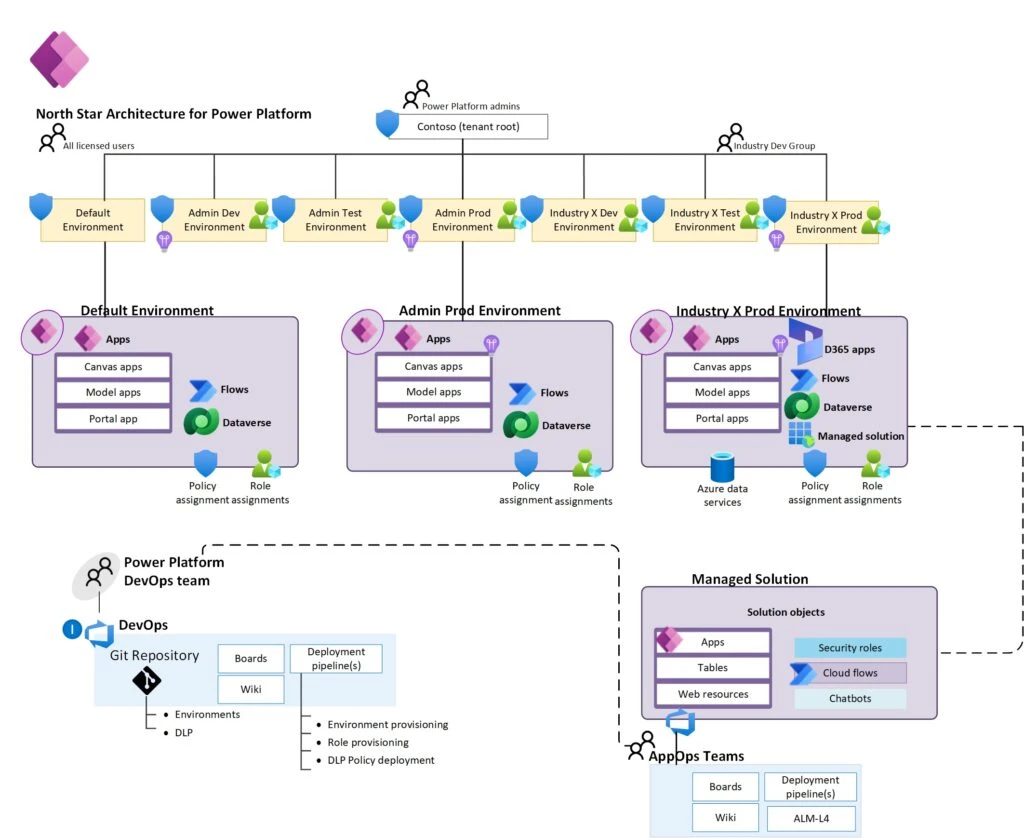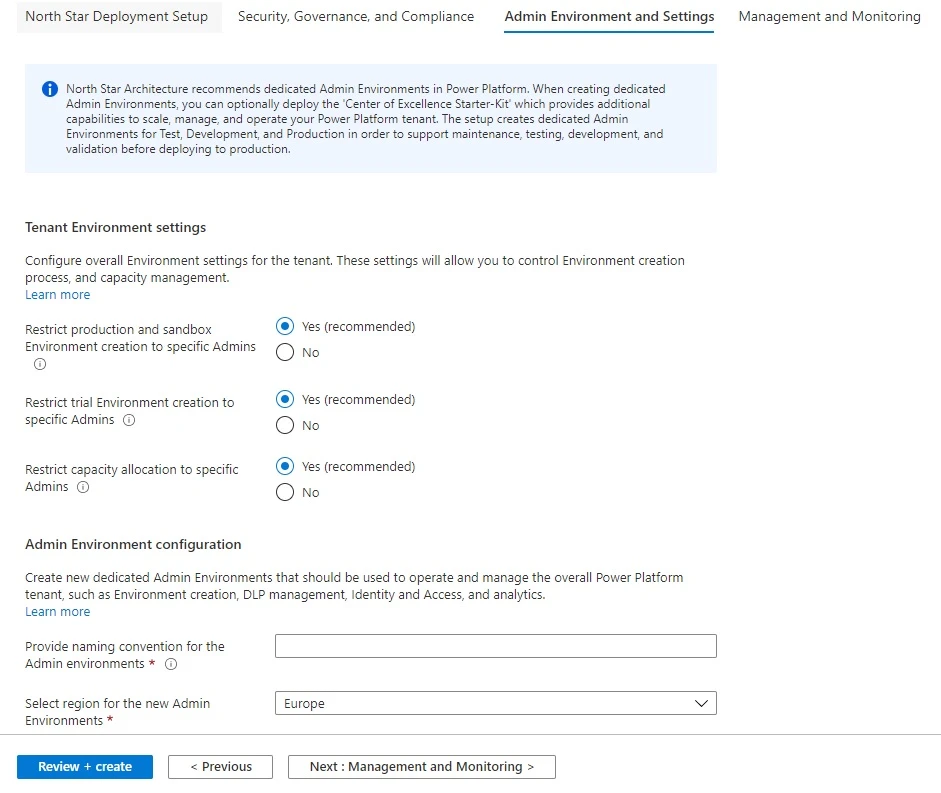
Reference Architecture and Landing Zones for Power Platform
Digital transformation is no longer just a buzzword, it’s a reality. Microsoft Power Platform—Power Apps, Power Automate, Power Virtual Agents, and Power BI—is at the heart of this transformation. Microsoft Power Platform is a disruptor technology that is transforming careers of ‘citizen developers’, empowering the pro developers to amplify their skills delivering building blocks and extending their reach to the business. Organizations can proactively manage the platform by putting guardrails in place allowing the business to innovate. Unblocking and empowering both the citizen and the pro developer personas through the next generation security, application life-cycle management (ALM), and governance experiences as well as meeting the demands of an ever-evolving business model in a rapidly growing business.
Reference Architecture and Landing Zones for Power Platform
“Tell us what good looks like”, is a common theme regardless the size of the enterprise. Scalable out-of-the-box guided governance workflows, reference architecture, and deployment blueprints, combined with opportunities to explore accelerated trust-building by simplifying the process of establishing proven, trusted controls for Microsoft Power Platform (Landing Zones). With this in mind, we have developed the Reference Architecture for Power Platform.
Reference Architecture for Power Platform is two-pronged. Primarily, it is an architecture and design methodology that consists of design principles to serve as a compass for organizations to determine their overall architecture for Microsoft Power Platform, across the critical design areas. This aims to help organizations make informed decisions and become aware of potential trade-offs for any deviations, juxtaposed with best practices and recommendations from Microsoft which are also aligned with the overall roadmap for Microsoft Power Platform. The methodology can be used for both new Microsoft Power Platform organizations, and those who already have started on their journey.
The outcome of the Reference Architecture is the “Landing Zones” (Environments), where professional developers and citizen developers can confidently develop and run their business applications that accounts for:
- Scale
- Security
- Governance
- Interoperability and extensibility
The Landing Zones consider all platform capabilities and resources that are necessary to support the organization’s business application portfolio, while remaining compliant per the organization’s requirements.
Further, the Reference Architecture for Power Platform is industry, persona, and application agnostic and will also serve the purpose as a solid foundation for Microsoft Cloud for industries where Microsoft Power Platform is an essential ingredient for the overall solutions and scenarios, providing Landing Zones for the industry applications.
This framework (High-level architecture depicted in figure 1.) has been developed and validated with several customers, across different industries and sizes, and we are pleased to announce the first iteration.

Secondly, we will provide reference implementation guidance to expedite and accelerate the implementation of Reference Architecture for Power Platform, so organizations easily can move from whiteboard to proof of concept, and from proof of concept to production, enabling a secure, governed, and simplified way to easily enable the best practices for Microsoft Power Platform.
A screenshot of the setup and deployment experience is depicted in figure 2:

Get started with Reference Architecture for Power Platform
To learn more and get started, visit the Reference Architecture for Power Platform GitHub page and also watch the recording with PowerCAT Live.
We look forward to continuing the development while learning from our customers and partners and welcome any feedback you may have.



